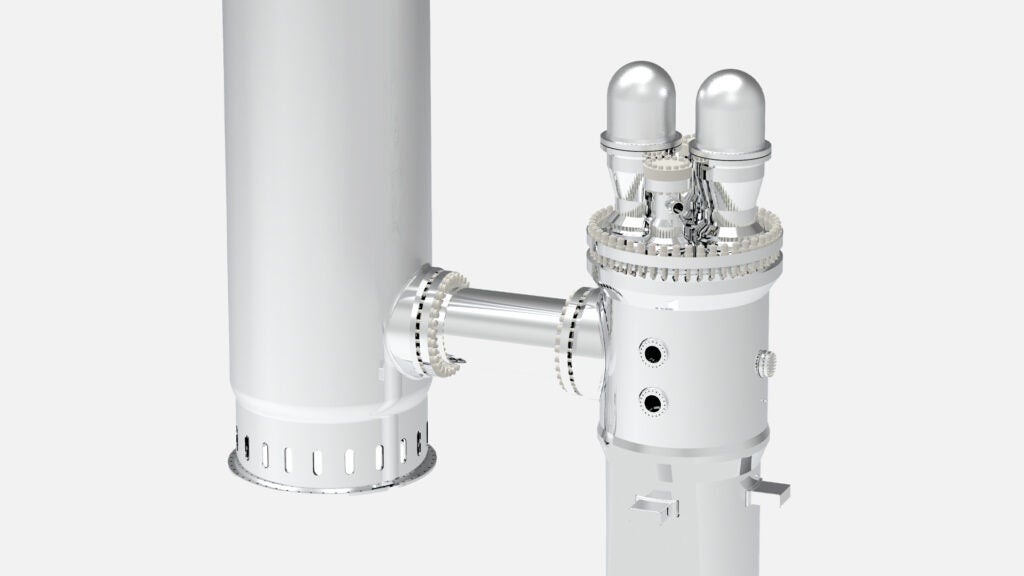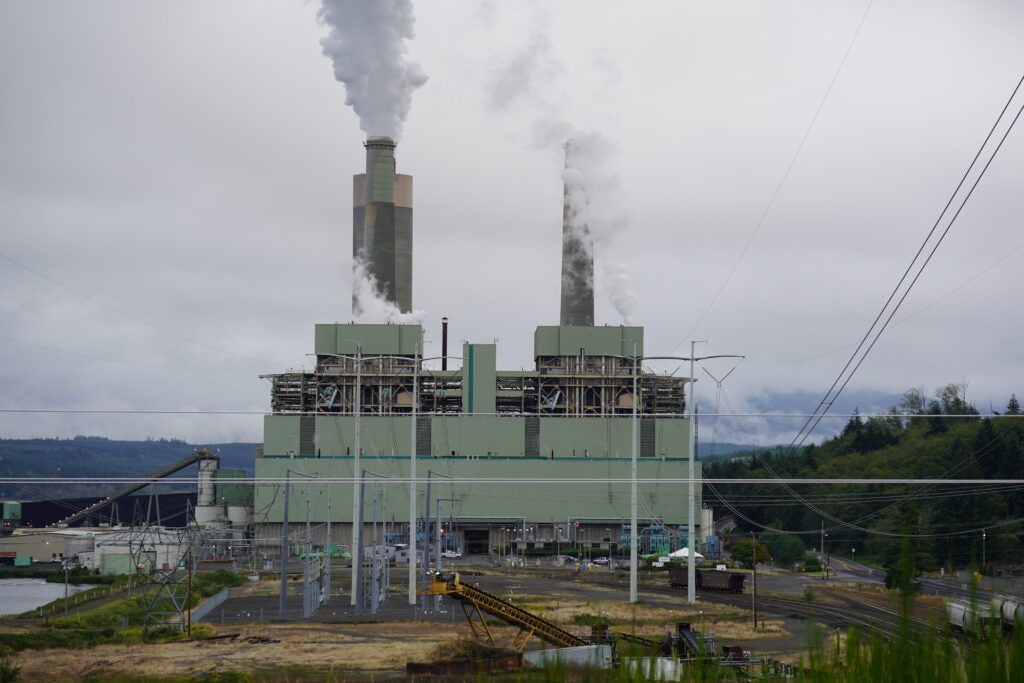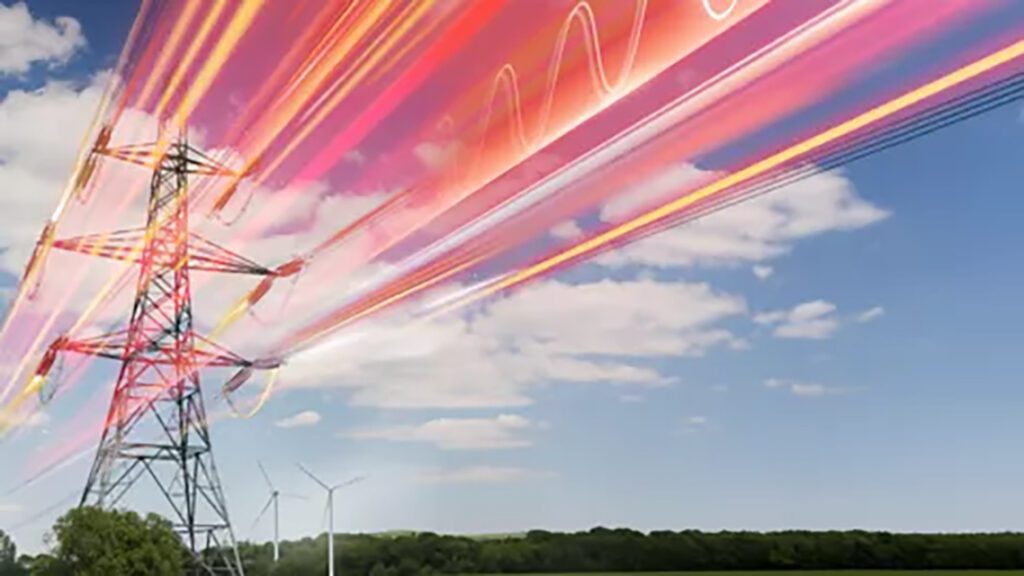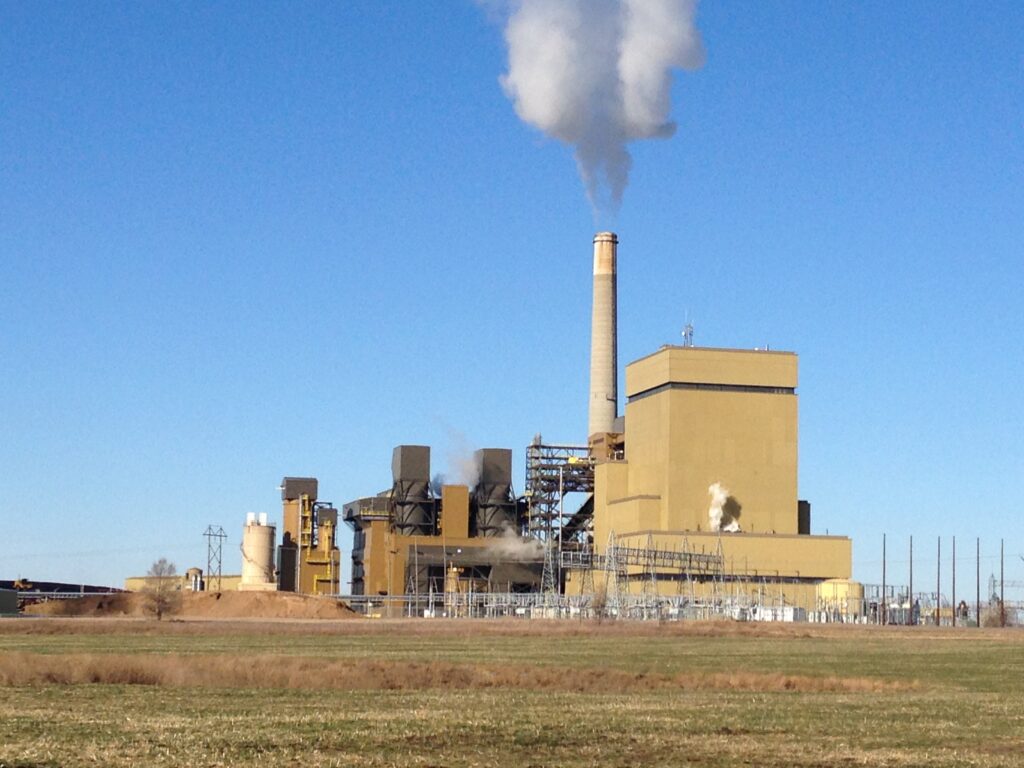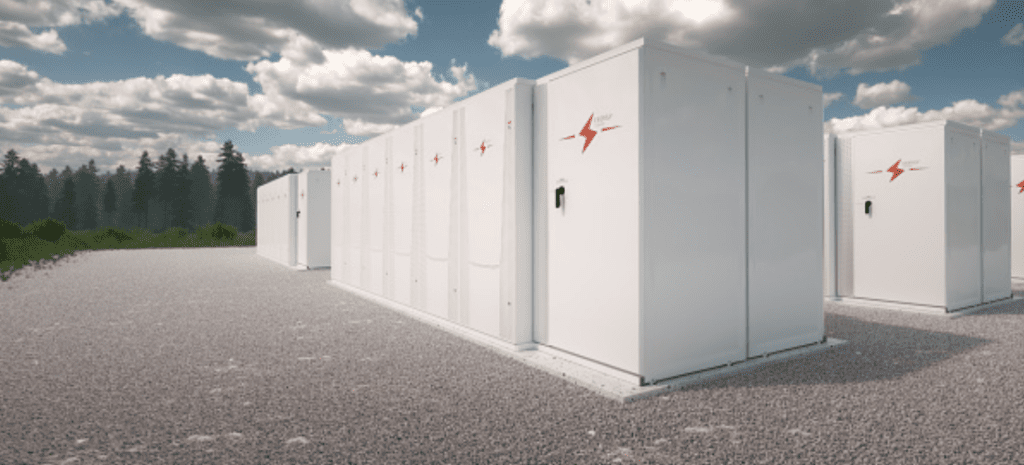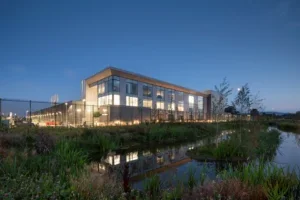
CyrusOne’s Jim Roche details how AI-driven workloads, high-density racks, and liquid cooling are transforming the data center–utility relationship.
Only a decade ago, few in the power sector could have predicted that the digital economy’s engine—the data center—would become a central concern for utility planners, grid operators, and energy policymakers. For much of its history, data center engineering was, as CyrusOne Senior Vice President of Engineering Jim Roche put it, “fairly boring.” That no longer appears to be the case. In the span of barely three years, surging artificial intelligence (AI) workloads, specialized computing hardware, and the sheer pace of digital expansion have turned data center design and power provisioning into one of the fastest-moving frontiers in infrastructure.
At Data Center World Power 2025 in San Antonio at the end of September, Roche recounted how average rack power densities—the amount of electrical load drawn by computing equipment within a single server rack—once hovered around 3 to 5 kW in older enterprise facilities. While those modest compute loads typically dictated overall power capacities in the low-megawatt range for an entire data hall, the rise of AI training clusters and the proliferation of graphics processing units (GPUs) and custom AI accelerators have pushed rack-level loads above 100 kW. Some experimental designs reach 300 kW per rack, and there are concept systems that approach 1 MW—a single rack consuming as much electricity as several hundred homes, Roche noted.
The escalation is “fundamentally transforming grid planning” owing to how AI computing operates in real-time, he said. Thousands of processors can ramp up simultaneously during training or inference cycles, producing what he calls “spiky loads”—rapid bursts of consumption that can surge 150% above normal operating levels within milliseconds. Because “spikes” strain internal electrical infrastructure, data center engineers are being forced to rethink how they distribute power within a facility, how they manage cooling loads, and how they build resilience into systems that were never designed for such volatility, he explained.
And for the power sector, implications are equally disruptive. Grid operators accustomed to serving predictable industrial loads now face facilities whose demand can fluctuate in milliseconds, rather than hours or days. Volatility has necessitated new approaches to substation design, transformer protection, and load-forecasting models that can anticipate instantaneous shifts rather than seasonal or daily patterns. And, it also compresses planning timelines. Utilities, which once projected demand years ahead, are scrambling to accommodate data center developers, which are seeking gigawatt-scale connections on the timescale of quarters.
“The days of just worrying about scraping dirt, calling the utility, and getting a basic feed in place—that’s all flipped on its head,” Roche said. “Now, it’s ‘I need an on-site substation and the ability to get there.’”
Still, Roche sees potential in this upheaval. The pressure to meet enormous, fast-changing power demands is driving an equally rapid evolution in how data centers are designed and built. Emerging opportunities lie in modular construction, where electrical and cooling components are prefabricated off-site and delivered ready to install; containerized uninterruptible power supply (UPS) systems, which integrate backup power and battery units into transportable enclosures for faster deployment; and thermal storage, which allows operators to store cooling capacity to ride through brief outages or equipment failures.
CyrusOne’s own Intelliscale platform, he explained, was developed to bridge the divide between present and future cooling architectures. While it currently supports traditional air-cooled systems, it can be upgraded to liquid-cooled configurations as rack power densities continue to increase. The flexibility will be essential as AI and high-performance computing push facilities toward power densities once considered impossible, he said.
On the generation side, Roche pointed to new and emerging resources—most notably small modular reactors (SMRs)—as a potential path toward on-site, carbon-free generation that could strengthen overall grid reliability. Some data center operators are already evaluating advanced nuclear, hybrid gas, and storage-backed systems to guarantee capacity in regions where grid connections lag behind demand, he noted.
Still, for the power sector, the evolution characterizes a profound strategic shift that will mean even more accelerated transformation. As utilities and regulators now grapple with forecasting demand from facilities that can require hundreds of megawatts of capacity on day one, data center operators are beginning to assume roles traditionally held by utilities themselves—funding substations, managing grid interconnections, and experimenting with on-site generation, he said.
What it might signal is a new era of cross-sector collaboration, regulatory evolution, and technological agility, Roche suggested. In the following Q&A, POWER asked Roche to elaborate on how AI is reshaping every link in the power and cooling value chain, how the digital infrastructure sector could find common ground between utilities and operators, and what lies ahead in the race to power the digital future.
Roche offers an insider’s view on the innovations, setbacks, and evolving mindsets that are defining the age of the AI-optimized, high-density data center. This interview has been lightly edited for grammar and style.

POWER: Considering our readers are primarily from the power sector, what would you advise them to pay attention to distinctly—now and potentially over the next five years—about developments in data center technology that could shift their planning horizons?
Roche: Over the past three years, the way data centers secure power has rapidly evolved. Operators are exploring new strategies to ensure power certainty, from building facilities closer to available energy sources to developing innovative technologies. Across the industry, data centers are rethinking how and where they access and deploy power.
For instance, at CyrusOne, our approach to power is focused on being a partner to the grid and bridging a gap between the generation industry and the data center industry—two sectors with different expectations for power reliability.
We invest in on-site power generation solutions, often in partnership with energy companies, to address grid capacity constraints, enhance sustainability, and strengthen resilience.
We also work with local governments and energy providers, participate in demand response programs, invest in renewable energy, and support grid stability by shifting or shedding load when needed.
POWER: The power sector’s biggest concern may be that it can’t adequately pinpoint how much power digital infrastructure might need. Would you agree this is the fundamental problem when we talk about the mismatch between the industries?
Roche: The data center industry is undergoing a pivotal transformation. As technologies evolve and AI continues to expand, we’re facing new and complex power demands. But arguably, this is becoming less of a power problem and more of an infrastructure problem. While this creates real challenges aligning with the energy sector, it’s also driving an unprecedented wave of innovation and investment focused on building the resilient, scalable power infrastructure needed for the future.
One of the biggest challenges we’re facing is that everyone across the industry is moving so quickly to address these demands that the industry is not taking a holistic approach. Another challenge is effectively conveying our customers’ needs to utilities in a holistic and forward-looking way. Data centers are scaling so quickly that the digital infrastructure industry hasn’t had the opportunity to strategically collaborate with utilities, making it difficult to accurately communicate long-term power requirements.
POWER: At DCW, you mentioned that data center expansion is “fundamentally transforming grid planning.” What specific changes do you see utilities making—or needing to make—to keep up with hyperscale demand?
Roche: Data center growth is fundamentally reshaping how the grid is planned and managed. Utilities are having to rethink traditional approaches to planning, investment, and coordination. The traditional planning model where load growth was incremental and predictable no longer fits today’s reality. Hyperscale demand is arriving in large, rapid bursts, requiring utilities to plan for step-change growth and build far more flexibility and foresight into their long-term strategies.
POWER: When you talk about “utility-customer partnerships,” what does an ideal, future-ready relationship look like from your side and what needs to change in how utilities approach large-scale customers like CyrusOne?
Roche: An ideal utility-customer partnership is highly collaborative, built on early engagement, joint planning, and flexibility. At CyrusOne, we’ve already begun having open conversations with our utility providers on what a future-ready relationship looks like, because the most effective relationships begin well before a project breaks ground.
We’re also investing our own capital to offset infrastructure costs associated with rising demand to ensure those costs are not put on utility companies and are never being passed down to local communities. Ultimately, the goal is early alignment on cost, grid capacity, interconnection timelines, and reliable access to continuous energy.
POWER: How are data centers reshaping reliability standards and expectations at the grid level, particularly with the rise of more variable and spiky AI-driven loads?
Roche: Data centers are redefining what grid reliability means and how it’s managed. Traditional load growth was relatively predictable, but AI and high-performance computing introduce more variable demand profiles that challenge conventional planning. Customers need data centers to be 99.9% reliable, and once you factor in generators and UPSs, centers can begin to experience spiky loads, which has led data centers to analyze power needs and offload safely where we can ensure consistency for our customers.
At CyrusOne, our goal is to eliminate the risk for our customers by proactively communicating our power needs to utilities and carefully planning to ensure grids remain stable and resilient even under these new, dynamic loads. Because power requirements have changed, utility companies used to factor in less than what data centers and their customers proposed they needed; now the planning must account more accurately for the exact power requirements needed so utilities can plan accordingly.
POWER: You referred to adopting new and “rediscovered” technologies. Could you give concrete examples of which legacy power or cooling solutions are being revived, why, and how they’re now central to data center operations?
Roche: We’re seeing a renewed shift toward higher-efficiency power architectures inside the data center. For example, we used to see a lot of DC power versus AC power, and now we are starting to see DC power come back into the conversion at the cabinet level as operators push for lower losses and higher current delivery.
Similarly, rotary UPS systems are re-emerging, often paired with flywheel technology, to provide seamless, inertia-based backup power without the interruption risk associated with traditional battery-only systems.
POWER: Where do you see disconnects or friction between data center operators and traditional grid planners, and what steps could close these gaps?
Roche: One of the biggest shifts we’ve seen in grid planning is the dramatic increase in lead times—what used to take under a year now often takes five years or more. The timeline between requesting power and needing power has rapidly shortened. We also don’t see enough emphasis on grid flexibility.
When you think about the world of utilities—they’re not used to seeing these kinds of loads. There’s a real need for flexibility in how they plan and how they work with us on that planning, because this dynamic carries all the way through the system. If you think about it from the customer level, we don’t spend enough time talking about the flexibility we need to provide—starting at the cabinet level, then moving up to the UPS, to generation, and ultimately to the utility itself. That flexibility, especially in handling these bursts of demand, is something that gets discussed, but not nearly with the emphasis it deserves.
At CyrusOne, we’ve adapted by planning our supply chain and equipment needs well in advance. We also strategically locate our data centers near available power, carefully assessing grid capacity to avoid overloads while still delivering the reliable energy our customers require.
POWER: What is the role of demand response, grid flexibility, or even capacity markets in supporting both the growth and reliability demands of large data centers?
Roche: Demand response, grid flexibility, and capacity markets are all essential tools for balancing the rapid growth of large data centers with overall grid requirements. These mechanisms allow data center operations to adapt in real time to system conditions. At CyrusOne, we actively coordinate with utilities during moments of grid stress, and many of our facilities can temporarily return power to the grid, helping stabilize it until normal conditions are restored. Ultimately, we have a vested interest in grid stability, which is why we prioritize responsibly sourcing and managing our power.
POWER: For utilities and regulators, what are the top blind spots or misconceptions about the pace of data center technology and power demand?
Roche: One of the biggest blind spots is underestimating how quickly data center technology and power demand evolves. While utilities and regulators often plan on multi-year horizons, AI and high-performance computing can shift dramatically within 12 to 18 months. This gap makes it difficult for traditional planning processes to keep pace with the scale and speed of emerging demand.
At the same time, the industry should have an open conversation about the role of nuclear energy and how it can be leveraged to provide safe, consistent, and dispatchable power at the scale and speed required by modern digital infrastructure.
POWER: What new resilience strategies are you exploring to address potential grid constraints, from on-site generation (like SMRs or renewables) to innovative storage or microgrid controls?
Roche: Ensuring certainty of power is critical, and we need to know that energy will be available and reliable at the moment a data center goes live, which is why working with utility partners is our top priority when planning a data center.
We are also looking for opportunities where we can have onsite power generation. That’s why we’ve pursued partnerships with utility providers, such as our collaboration with Calpine Energy, to eliminate uncertainty around grid availability and deliver proven, dependable reliability.
POWER: Finally, as more utilities deliver on-site substations and direct feeds, what lessons have you learned about project execution, risk-sharing, and cost that the power industry should adopt?
Roche: As utilities move toward providing on-site substations and direct feeds, one of the clearest lessons is the value of true joint planning from the outset. Success hinges on early alignment around design standards, permitting timelines, and cost allocation and execution responsibilities.
Data centers are now stepping into territory they haven’t traditionally been involved in. Historically, data centers didn’t participate in the design and build of substations, or in funding transmission lines to their facilities. But that’s changing. To help accelerate speed to market and support the capital needs and timelines utilities are facing, we’ve taken a more proactive, collaborative role. We’re partnering closely and taking financial responsibility for these infrastructure projects, so they don’t impact other consumers on the grid.
In many ways, we’re alleviating those challenges by offering utilities a kind of one-stop shop—a fully designed, engineered, and ready-to-go solution that requires minimal effort on their end.
At the end of the day, yes—it’s utility-delivered, on-site substations and direct feeds, but we’re the ones designing, funding, and delivering them. The utility is simply connecting in.
—Sonal Patel is a POWER senior editor (@sonalcpatel, @POWERmagazine).



